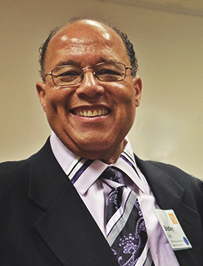• by Bradley Scott, Ph.D • IDRA Newsletter • February 2014 •

It was 50 years ago that the Civil Rights Act of 1964 was passed and was enacted on July 2, 1964, as the law of the land. A college professor told me once: “We already have civil rights. The law was passed a long time ago.” I had to agree, “Yes, we have the letter of the law, I just don’t think we have the full spirit of it yet.” This article is a brief reflection on where I think we need to go to capture the full spirit of the law.
As we approach the act’s 50th anniversary, it is my hope that we can spend some time capturing and documenting evidence of where the act has come to life, is coming to life or is manifesting signs of coming to life for learners and their families in schools and communities across the nation, and particularly across federal Region VI (Arkansas, Louisiana, New Mexico, Oklahoma and Texas), the region served by IDRA’s South Central Collaborative for Equity. You can help us to make this happen. I will explain how in a moment. First, let’s look briefly at what the Civil Rights Act was intended to do.
The act was intended by its language “to enforce the constitutional right to vote, to confer jurisdiction upon the district courts of the United States, to provide injunctive relief against discrimination in public accommodations, to authorize the Attorney General to institute suits to protect constitutional rights in public facilities and public education, to extend the Commission on Civil Rights, to prevent discrimination in federally assisted programs, to establish a Commission on Equal Employment Opportunity, and for other purposes.”
Title IV of the act defined the desegregation of public schools, including public colleges and universities, along with Title VI, Section 601, provided that “no person in the United States shall, on the ground of race, color or national origin, be excluded from participation in, be denied the benefits of, or be subjected to discrimination under any program or activity receiving federal financial assistance.”
This landmark piece of legislation set in motion activities in public education that are to this day challenging us to focus on the protection of the benefits of a public education for all learners regardless of their race, color or national origin. There are big questions we could ask ourselves in this year of commemoration, reflection, redirection, rededication and new action regarding the implementation of the Civil Rights Act.
- How well are we doing?
- Where do we need to focus greater time, attention, energy and effort?
- Who is receiving the benefit of a high quality education that leads to school success, graduation, college going and the creation of a good life?
- Where are we advancing?
- Where have we essentially stayed the same?
- Where are things getting worse?
- What successes have we had?
- Where have we failed?
- What new work do we need to undertake?
- How do we reset a revitalized civil rights agenda for the 21st century?
There are many other big questions we could raise, but finding the right answers to these 10 would be a powerful enough start.
Here is my challenge to our readers and partners: Between today and July 2, 2014 (the actual birthday of the Civil Rights Act), please visit the IDRA website at www.idra.org and populate our Equity Hub Crowd Map with your own examples of real civil rights in action in education. Let us know by the examples you submit what is working that reflects the spirit of the act. Let us know your concerns through examples you submit where we are falling short across the region and nation. Let us know where education stakeholders, including principals, teachers, parents, students and community members are making a difference for learners regardless of race, color, national origin, sex, economic status, language, ability or disability. Let us know how these stakeholders are creating civil rights-based educational benefit for diverse learners that is leading these learners to school success, high school graduation, college attendance and completion and successful transition into life and work experiences.
Feel free to write just a single sentence or a full story. Share photos and videos too, if you’d like. We need your stories because 50 years of work and dedication to these legal rights deserves an airing and an accounting. Happy birthday to you, Civil Rights Act of 1964. To paraphrase an old spiritual: “You’ve been on this road a mighty long time. I hope you are not tired yet.”
Bradley Scott, Ph.D., is the director of the IDRA South Central Collaborative for Equity. Comments and questions may be directed to him via email at feedback@idra.org.
[©2014, IDRA. This article originally appeared in the February 2014 IDRA Newsletter by the Intercultural Development Research Association. Permission to reproduce this article is granted provided the article is reprinted in its entirety and proper credit is given to IDRA and the author.]


